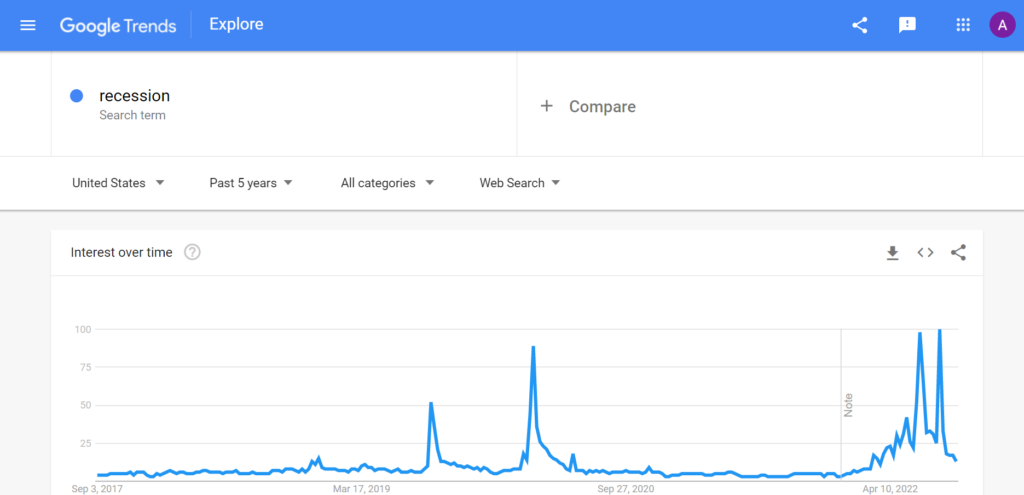How To Recession-Proof Your Business Through SEO
Have you seen the news recently? Recession is coming. It’s all about surviving it now. Some even mention thriving during a recession. Every media outlet has at least a handful of articles about the upcoming recession and how to...

Have you seen the news recently?
Recession is coming. It’s all about surviving it now. Some even mention thriving during a recession.
Every media outlet has at least a handful of articles about the upcoming recession and how to prepare for it. While very few officials speak of recession as a certainty, the media certainly does.
Of course, the world may get super-lucky and avoid recession. But the cards seem stacked against us at the moment, so it’s probably time to stop ignoring the articles urging us to prepare for the worse (and hope for the best, naturally).
For my part, I plan to do what I do best to weather the upcoming storm: rely on SEO. Along with content marketing, it’s helped me build two successful businesses in the past seven years and get through another crisis (the pandemic) scot-free.
Here’s why I’ll rely on SEO (and how I’ll do it):
SEO Is the Tactic that Keeps on Giving Even after You’ve Stopped Investing in it
Publish an article today and get traffic from it (and even leads!) for years to come. Sure, PPC ads are faster (SEO takes time). But as soon as you stop pouring money into them, the results will stop too.
If you rely on PPC now, especially SEM, I advise you to re-allocate some of that budget to SEO. You can’t know for how long you will be able to pay for ads in the medium-term future, so it’s wise to start building something that doesn’t need a constant investment.
Case in point: an article published on my agency’s blog in 2017 (!) still ranks for an important keyword for us – hire SEO copywriters –, and it still brings in leads five years later. One article, years of revenue with no additional investment – what more can you want, even in a recession?
Use SEO as a Forecasting Tool
If you already have a library of content, you can use it for more than drawing traffic or leads. It can be the basis of your trend analysis. Log into your Google Search Console to see which of your content pieces got the most clicks in the past month. How is this different from the past three or six months?
Can you notice a pattern? If so, you may have just spotted a new trend, like increased demand for a product/service of yours or decreased demand for something else.
Stay Agile and Ready to Switch Things Around
Things are different in a recession. For instance, while the economy was booming, your content strategy was most likely focused on acquiring clients.
During a bad economic spell, you may need to regroup and re-focus on top-of-the-funnel opportunities. Perhaps there are fewer opportunities to sell, but there are definitely more opportunities to engage with new prospects, gather new contacts, and more.
The key to surviving a recession is to do what you can when you can. If you can’t push your big-ticket products now, it may be time to take another look at your content strategy and see how you can regroup. Don’t close your content stream and wait for the storm to pass. Be there to offer shelter in the form of relevant information to those who need it.
Capitalize on Trends
When times are uncertain (did you miss this term?), trends change faster than usual. Remember the spike in demand for pet adoption and at-home workouts during the lockdowns? They came as fast as they went.
The companies that foresaw these demands thrived when others barely made ends meet. How did they do it? They simply capitalized on emerging trends.
They didn’t wait for everyone who needed an online fitness trainer to contact them. Instead, they used their now-empty gym to live stream workouts.
One way to spot trends before they are long gone is Google Trends. You can type in a keyword that’s related to your industry and see how the search for it evolves. Here’s an example – about recession, since it’s the topic at hand.
 Screen capture of Google Trends
Screen capture of Google Trends provided by Author
The 5-year trend graph for “recession” has two major spikes: one when the pandemic first started and everyone was expecting a recession. Since it didn’t happen that fast, the search volume declined, only to be picked up later, because of an Eastern European war, spikes in energy and gas prices, and other similar “goodies”.
Wrapping Things Up
The ability to pivot quickly is always important. But during a recession, it can make the difference between shutting down your business and thriving.
During harsh economic times, your audience doesn’t have the disposition to read your latest blog article just because they have a few minutes to kill. They want to read something actionable, something that really helps them.
This is why you need to ground your SEO and content marketing strategy in what people are searching for now, what their interests are now, and how you can help them now. Speaking of now, now is also the time to start investing in SEO so that you have a few ranking pieces of content that you can rely on when thngs get tougher.
Not sure where to begin? My team of SEO experts and I can help! Check out our SEO content writing services and let’s talk!

 ShanonG
ShanonG 































